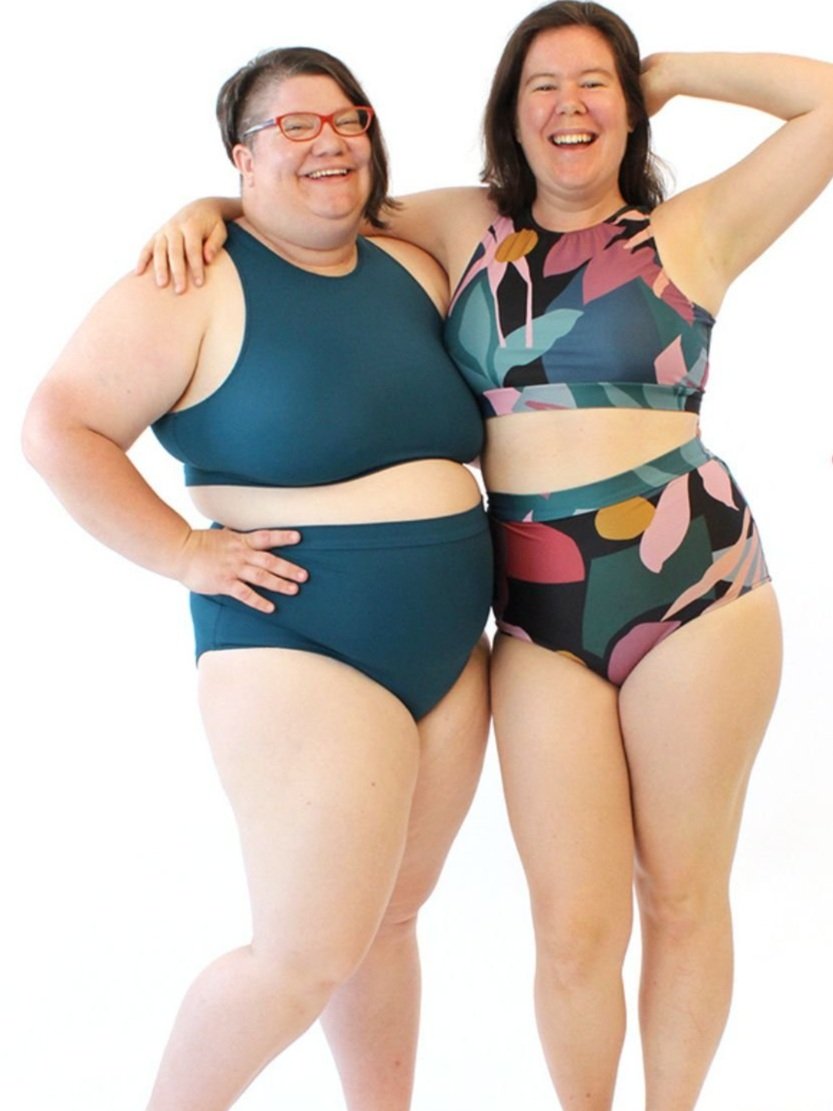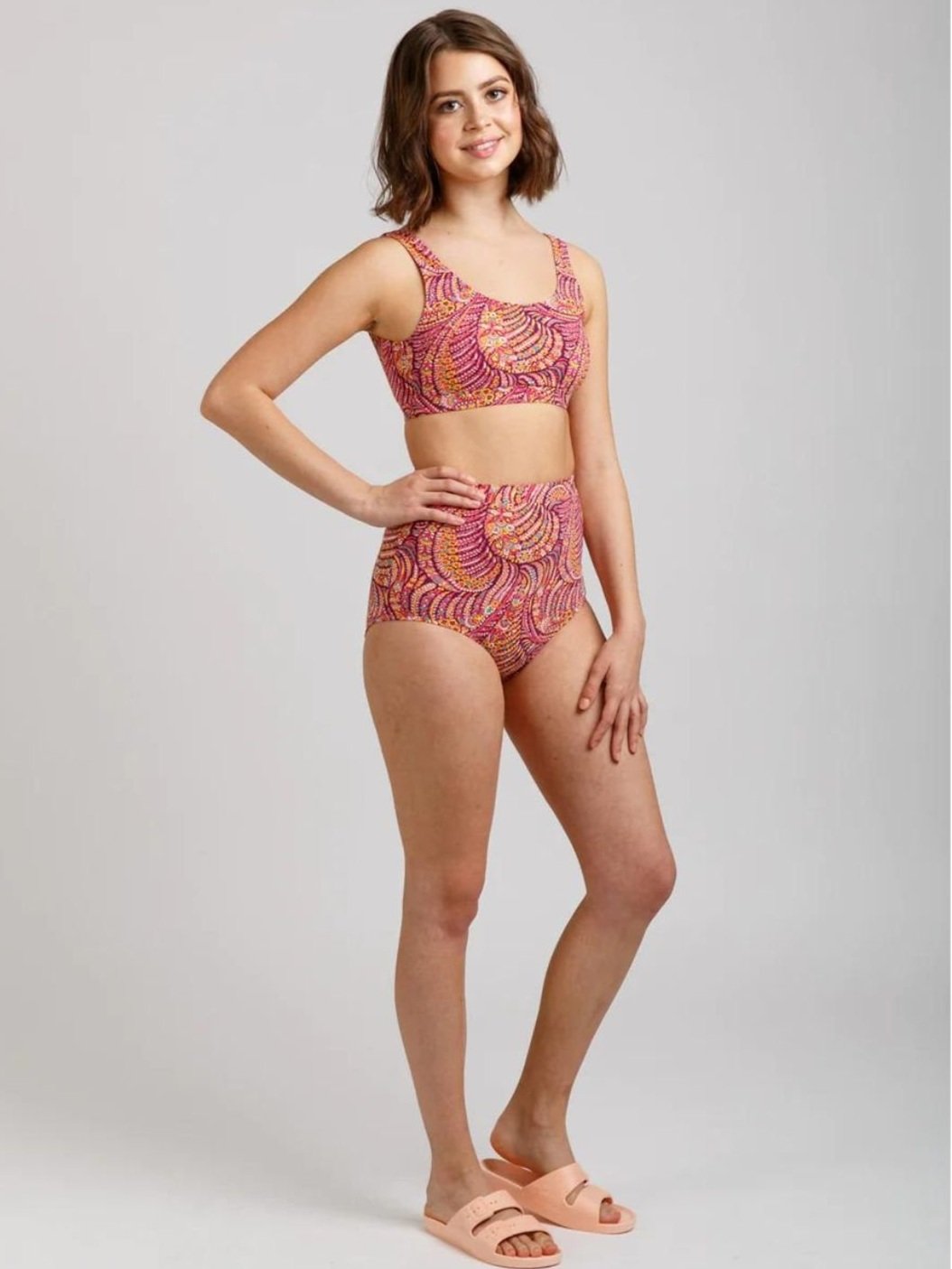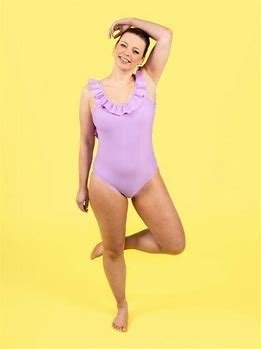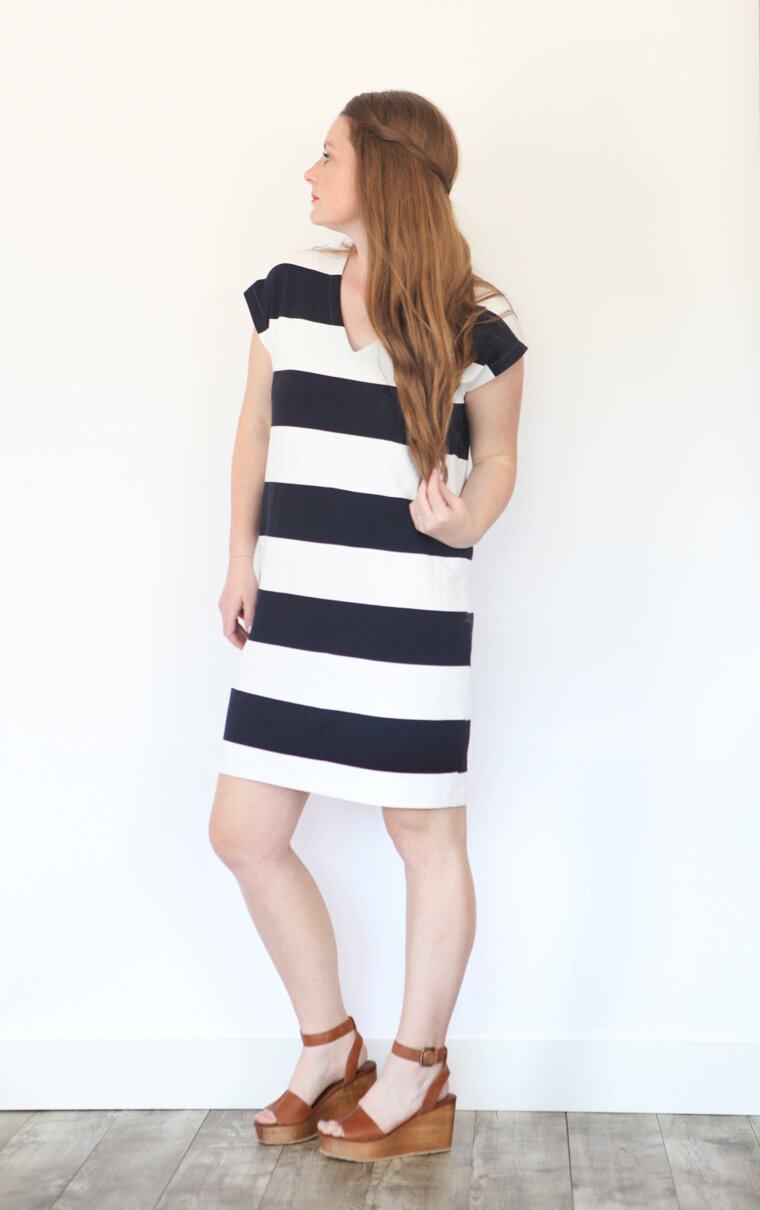Sewing Tip: What To Do About Your Thread Getting Stuck On The Spool
Thread Stuck On The Spool? No problem!
If your thread gets stuck on the spool. There could be a burr in the top that’s grabbing the thread as it gets pulled off the spool. This can cause the thread to snap or the machine to stop sewing.
Take a piece of sand paper or an emery board and sand it away.
Then continue as you were with your sewing project!
Want more tips or have one to share? Send us an email!
Sewing A Swimsuit
Here’s something shocking that I learned about sewing swimwear: It’s not that hard! There are several well-designed swimsuit patterns to choose from. Sources for swim fabric are more plentiful than there have ever been. All you need are the proper tools and you’ll be on your way to producing lovely swimsuits at a very reasonable cost. By, the way, we now have a Swim Wear Class I’m teaching! The following are my recommendations:
Time To Sew
by Martha West
1. Choose a beginner friendly pattern to start with.
Your pattern should be rated as an easy/beginner pattern. It should be one that runs true to size and has had a track record of success with the greater sewing community. The best way to figure out its success is to check Instagram. If there are hundreds of smiling sewists showing off their creations, you are on the right path. (My favorites: Megan Nielsen Cottesloe, Helen’s Closet Sandpiper, Tilly and the Buttons Coralie)
2. Choose your size based on your measurements and the size recommended by the pattern you’ve chosen. ALL patterns have their own sizing so don’t get hung up on what your RTW size is.
3. Choose swim fabric! You must have an appropriate weight and stretch factor for a swimsuit to work. Don’t bother with sewing something in your stash that’s stretchy. Swim fabric is its own beast, and it has unique properties. You’ll need at least 50% stretch in both directions, and some patterns call for 70% stretch. Usually, you’ll be looking for 90/10 nylon/spandex or 90/10 polyester/spandex fabric. Check your pattern for their requirements. (Good sources are Fabric Fairy and Vogue Fabrics.
4. Choose swim lining fabric! You can use fabric designed as a swimwear lining, or you can use your exterior fabric as the lining. (Good sources are Fabric Fairy, Vogue Fabrics, and Joann)
5. Choose swim elastic. There are two types of swimsuit elastic: polyester/latex and rubber. If you’re just beginning, choose polyester/latex swimwear elastic rather than rubber elastic. The rubber elastic holds up much better over time in chlorine, but it is tricky to sew. (I only use Fabric Fairy elastic)
6. Use a Microtex sewing machine needle. I recommend purchasing 80/12 and 90/14 sizes. That way, if you need a heavier-weight needle for sewing the elastic, you will have it on hand.
7. Use your regular sewing machine and a regular zigzag stitch. Avoid using a serger for your initial suit. There is no need to serge the edges of swim fabric as it never frays and serged edges are more difficult to rip if alterations are needed.
8. Plan on purchasing double the amount of fabric you’ll need so you can make a “muslin” fitting version. You’ll need to double the exterior and lining fabric, but you really can’t make a test swimsuit out of a non-swim fabric and have accuracy.
9. Don’t bother with your iron. Swim fabrics don’t take the heat of the iron or a press very well, so don’t waste time pressing seams. Betcha never thought you’d hear me say that!
Favorite Dress Patterns
The votes are in…
by Martha West
Gail and I were talking about our slowly blossoming longing for dresses. It has been a long, cold winter wearing mostly cozy joggers. But, that’s getting old. We both feel that many of you will also be longing for a new dress for the warmer weather and we’ve heard from some of you that you’d like recommendations for dresses that are a bit shapely but still comfortable as we move into the usual blazing hot summers of central Ohio.
So, we did a survey and this post is a listing of the top dress patterns on your wish lists (and ours)…
First, Gail’s top pick is a Vogue pattern that’s out of print. She’s made several in different fabrics and says it’s also a great dress for layering in winter. I found a very similar pattern: New Look 6263 and it’s on my wish list now too!
Many of you voted for wrap dresses and there are MANY good patterns: I’ve made the Vogue 8896 and I like it, the Appleton by Cashmerette is a great dress in the larger size range, the Closet Core Elodie got many votes but the big winner was the Wildwood Wrap Dress by Sew House 7. It comes in a wide size range and it looks great in solids or prints!
My go to dress in summer is a self drafted design but it is very similar to the Lottie Dress by Christine Haynes, shown in the top image. I’ve made mine in jersey knits, double gauze and a light-ish cotton poplin. I love that it is somewhat fitted looking but not at all binding for the hot days of summer.
I’m making the Lodo Dress by True Bias, which is a surprise because the picture of the dress on the pattern envelope is really unappealing to me. But I looked at the many, many pictures posted online of this dress and EVERYONE looks good in it. That sold me on it!
The Charlie Caftan by Closet Core patterns was a big vote getter. It’s an interesting pattern due to the many options which make very different looking dresses. Our favorite is the one pictured here but the other options are also great summer dresses!
Please let us know what your favorites are! We’re always here to help if you feel the urge to try one of these or any other dress patterns that you’re longing for.
Martha West
The Sewing Hive
Which Class???? Bust Adjusting Vs Pattern Fitting vs Master Pattern Workshop. ??
Hmmmmmmm.
Last week I heard from a customer that they were having trouble deciding which of three classes she should register for. Knowing that if one person is having problems, so are others, I decided time to tackle the questions.
Bust Adjustments Vs Pattern Fitting Vs Master Pattern Workshop????
Bust Adjustment: Since most patterns are scaled on a B cup, and unless you are a B Cup, or have a pattern that specifically states it has cup size variations, you may need to adjust the pattern to your cup size. Add to that the cup size in RTW is different than in patterns and maybe that’s why your garments are not fitting well. Also, how the dart is placed on your body will affect the fit: too high, too low….. If the rest of the pattern sizing just involves altering between sizes that you are confident doing, then this is a good class for you. We’ll show you how to do this adjustment, so that you can do it confidently with any pattern you select in the future.
Pattern Fitting: This is a good session if you have one pattern that you would like tissue fitted before making a test garment. We discuss designer ease from the finished garment measurements on the pattern, and alter the pattern as needed. This may include a bust adjustment, but we are doing more than explaining. We’ll work on all aspects of fitting: lengthen or shortening, sleeve and cuff length, altering between sizes and adjusting to personal preferences. If you bring fabrics you are considering we can advise on how each one will work with the pattern. We can cover a lot in 2 hours. When you leave you will be ready to sew a wearable test: Paula’s term for a muslin that you wear to really live with a garment and tease out the details of what you like and dislike before cutting into your beloved stash fabric.
Master Pattern Workshop: This is a good workshop for those that are interested in being able to take details from RTW and incorporate them into a basic pattern. This is a fast paced workshop. We alter, cut out and machine baste a muslin from a fitting pattern. Then we drape in the details for a custom fitting bodice front and back, and skirt with only wearable ease.( meaning you can move in it.) Once all are happy, then the muslin is marked, disassembled, and then drawn on to heavy paper. We encourage you to bring in a pattern you are interested in making and we can show you how to lay your block on the pattern to compare your fit to the pattern fit. If you need help in the future adding details from RTW onto your basic pattern, then you can just come to us on an hourly basis. We do have a class for those that have taken any block, toile, master pattern class in which you create a classic shift dress with facing from your block. Kind of gets your hands dirty…..
Any other questions….ask, ask, ask……..then sew, sew, sew…..studio@sewinghive.com
Best,
Gail
Can't go get a haircut? Let's make a scrunchy!
Scrunchy “Recipe”
by Jamie Hevener
Supplies:
20” wide by 4” high medium-weight fabric. You can use just about any kind, like t-shirt, quilting, velour, silk, etc.
9” long x 1/8” wide elastic
matching all-purpose thread
scissors
sewing machine
ruler
hand-sewing needle
bodkin or a large safety pin
Fold fabric in half with the fabric fronts facing, length-wise and sew a 1/4” wide seam allowance along the long raw edges.
Flip right-side-out.
Using a safety pin or bodkin, attach the tool to the end of the elastic and pull into the tube. Make sure you keep both elastic ends in sight.
Tie the ends of the elastic together, leaving a 1/2” tail, like you would for hand sewing.
Fold one end toward itself so raw edges are tucked inside. Tuck the remaining end into the folded end about 1/2”.
Hand sew the ends together with small stitches. Back stitch at the end and you are done!


















